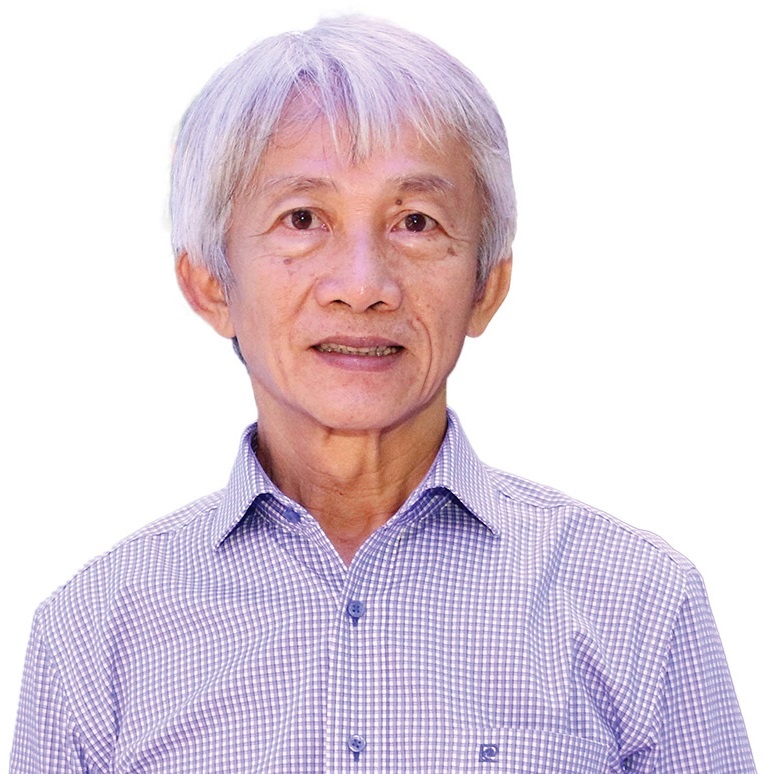Striving to become an international financial centre
 |
| Prof. Dr. Tran Ngoc Tho - Ho Chi Minh City Economics University |
Thu Thiem 2 Bridge is dubbed as a connection for the city to realise its dream of becoming an international financial centre (IFC). However, such a dream cannot become true if there is no political determination and if blunders are made.
From 1954 to 1975, Saigon, now Ho Chi Minh City, was known as the “Pearl of the Orient”. At that time, in Northeastern Asia, Saigon was competing with many other pearls such as Shanghai, Hong Kong, Singapore, Tokyo, and Bangkok. These pearls have already developed to become the world’s leading IFCs, while Vietnam’s pearl remains less developed though it has always been finding ways to shine, even in the most difficult situations. At present, the city is focusing on service development, including international financial services, and how it will carry this out.
Over the past decade, after numerous seminars, meetings, and amendments, the latest version of the scheme seems to prove more feasible thanks to more constructive comments and ideas from private domestic and international investors. The scheme has also got the thumbs-up from the government.
A to-do list and details for each development period of the IFC have been advanced, from the model of urban government, complexes for banking, financial, and service activities, funding – meaning initial commitments of foreign investors, and feasibility, to detailed proposals on legal adjustments in the laws regarding land, construction, currency, and tax, as well as proposals on the development of fintech.
In addition to exactly determining the form of the IFC, the most important and decisive factor of the centre is a sound legal framework, which may need at least one decade to be perfected for the IFC to be constructed and become operational.
Due to the complexity of the national currency sovereignty and the safety of the whole financial system, institutional reform will not be implemented further without absolute determination and consensus.
A number of IFCs such as Amsterdam, London, and Hong Kong have surged from their old-fashioned commercial centre models, with a financial landscape developed based on international commercial activities where merchants shifted their activities from trade to property and finance.
Besides the model developed from the commercial factor, in the existing modern world, many leading IFCs such as Dublin, Dubai, and Gujarat have been built as separate units in these nations’ special economic zones (SEZ).
IFCs are located in such zones because of the necessity in developing economies to compete with pioneers and in order to take advantage of new opportunities from globalisation and geopolitical competition.
They are not necessarily supported by a strong large domestic economy. They have been developed in a growing number because of new development purposes and the need to exploit new potential induced by changes in the world’s geoeconomic-political landscape.
The decline of the Hong Kong IFC or the Russia-Ukraine conflict could segment the global payment system, with the enhancement of the role of the cryptocurrency in the private sector, while the digital currency issued by central banks will also be applied on a wider scale.
All will become favourable if Ho Chi Minh City has a model located in an SEZ or in a special zone specialising in financial services in order to conduct pilot financial renewals.
However, the biggest challenge is that Vietnam currently has no law on SEZs or special administrative-economic zones. Hence, will the IFC be developed in general together with the whole nation’s economic liberalisation? Will it need even one decade more to make the dream of an IFC become true?
There is another way – via the combination of a narrower concept of SEZs and a national strategy on IFC development based on various periods of time. With this approach, the SEZ is not a limited zone separated from the domestic economy, but a special zone benefiting from a special legal framework in order to create a “soft space” for development not only for Ho Chi Minh City, but also for the whole southern region.
In this process, the city must be offered the best conditions in order to become a global city and a regional IFC. Historical circumstances coupled with new developments in the world’s geoeconomic-political landscape have offered the city many advantages in becoming such a centre.
Whatever it may be, inhabitants of the city will actively find out their ways for development, and it will become more developed if it receives sufficient priority to become an IFC.
What the stars mean:
★ Poor ★ ★ Promising ★★★ Good ★★★★ Very good ★★★★★ Exceptional
Related Contents
Latest News
More News
- Main drivers for Vietnam’s digital economy future (December 03, 2025 | 11:35)
- Pivotal stage of growth paves way for rise in M&As (December 03, 2025 | 10:00)
- Positive projections for M&A interest from Thailand (December 03, 2025 | 09:40)
- Manifesting the first line of defence in cybersecurity (December 03, 2025 | 09:00)
- The transformational role AI can play in accounting arena (December 03, 2025 | 08:00)
- Unlocking 5G-AI potential in Singapore (December 03, 2025 | 08:00)
- Data-driven strategies vital for a fast-evolving nation (December 02, 2025 | 09:41)
- Policy to practice: how Vietnam can lead the region (November 26, 2025 | 16:03)
- Mobilising private capital at scale vital for climate battle (November 26, 2025 | 15:36)
- VILAF and Yoon & Yang launch Vietnam - Korea Practice Unit (November 26, 2025 | 15:16)

 Tag:
Tag:





















 Mobile Version
Mobile Version